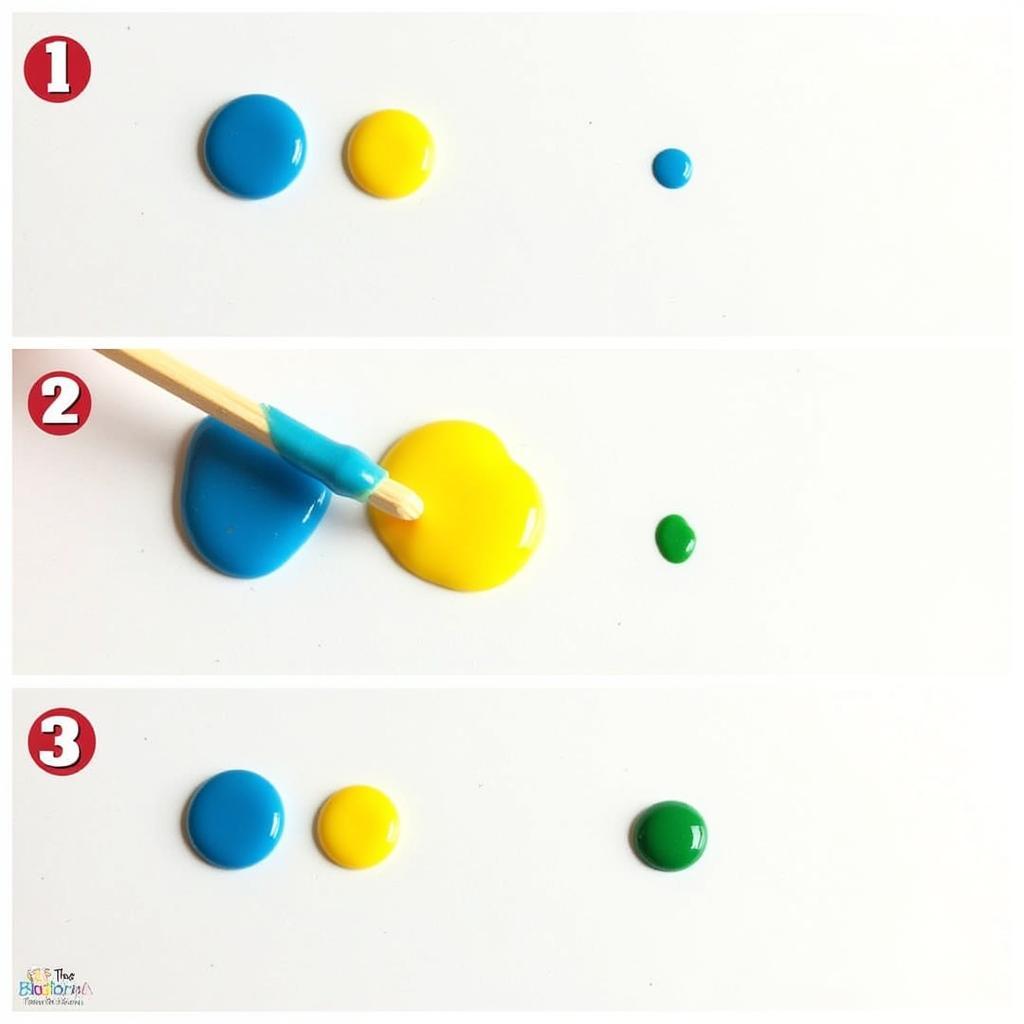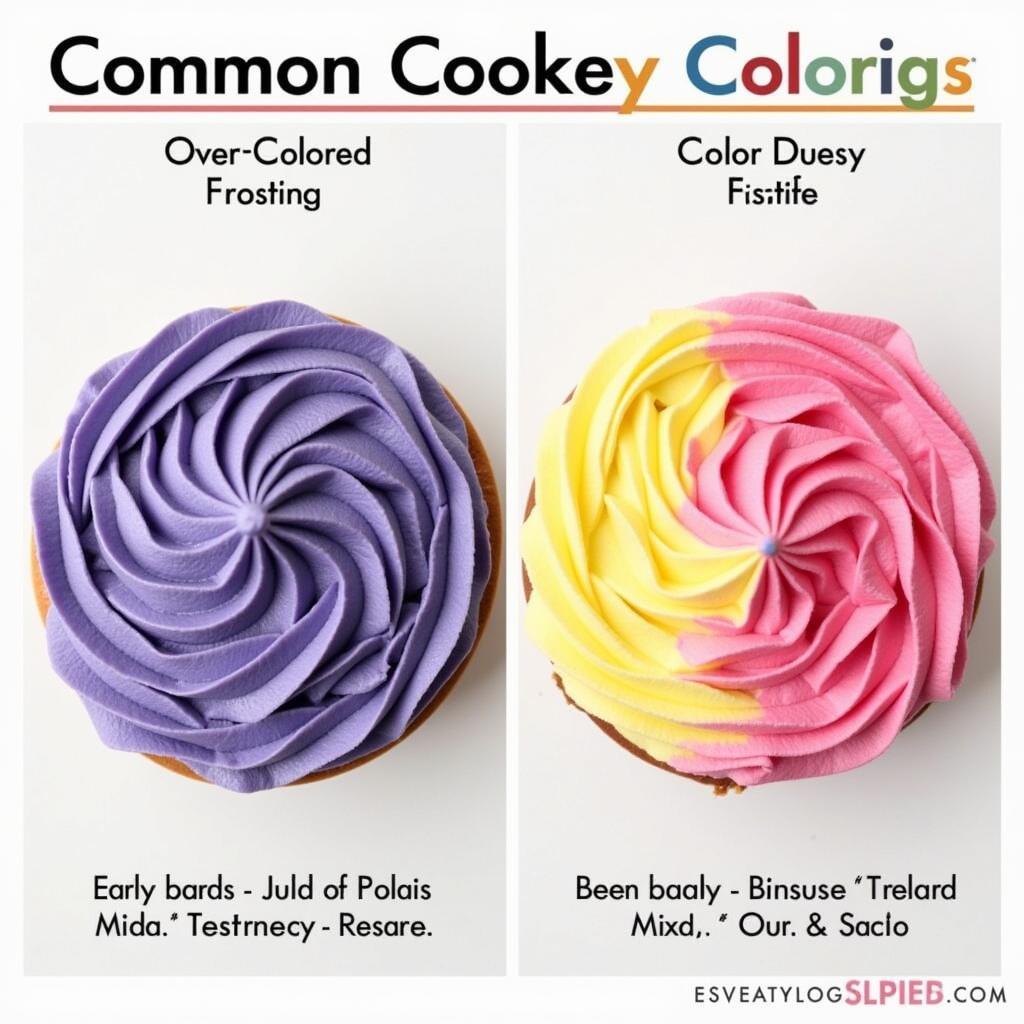Have you ever wanted to create a show-stopping cake with deep, rich colors or dazzling cookies with vibrant frosting? Understanding how to use a Food Coloring Mixture Chart can unlock a world of possibilities in your kitchen. Let’s dive into the colorful world of food coloring and explore how to achieve those picture-perfect hues for your delicious creations.
Unlocking the Rainbow: Understanding Food Coloring
Before we delve into mixing colors, let’s understand the different types of food coloring available. The most common types are liquid, gel, and powder, each with its own pros and cons.
Liquid food coloring is widely available and works well for lighter shades, but achieving deep, vibrant colors might require a significant amount, potentially affecting the texture of your recipe. Gel food coloring color chart, on the other hand, is highly concentrated, offering vibrant colors with just a small amount. Its concentrated form also minimizes the impact on your recipe’s consistency, making it a popular choice among bakers. Powdered food coloring is ideal for achieving matte finishes, especially in dry decorations like fondant or gum paste.
Mixing Primary Colors: The Foundation of Your Palette
Just like in art, primary colors form the basis of your food coloring palette. Red, blue, and yellow are your building blocks, and understanding their interactions is crucial for creating a wide spectrum of colors.
Creating Secondary Colors
- Green: Combine equal parts blue and yellow.
- Purple: Combine equal parts red and blue.
- Orange: Combine equal parts red and yellow.
Remember to mix your colors thoroughly to ensure a consistent shade. A toothpick or a small whisk can be helpful for this purpose.
 Mixing Primary Food Colors
Mixing Primary Food Colors
Beyond the Basics: Expanding Your Color Horizons
While primary and secondary colors cover a wide range, achieving those nuanced shades requires a bit more exploration. Let’s venture beyond the basics and discover how to create a broader spectrum of colors.
Achieving Tertiary Colors
Tertiary colors are created by mixing a primary color with an adjacent secondary color. For example, combining red (primary) with orange (secondary) creates red-orange. Experimenting with different ratios allows you to fine-tune the intensity and achieve your desired shade.
Mastering Neutrals and Earth Tones
- Brown: Mix all three primary colors – red, blue, and yellow – in varying ratios to achieve different shades of brown.
- Gray: Combine black food coloring with a small amount of white food coloring or gradually add black to a light color like pale blue or pink.
- Ivory: Add a tiny amount of brown or orange to white food coloring to create a warm ivory shade.
Essential Tips for Successful Color Mixing
- Start with small amounts: Always begin with a small amount of food coloring and gradually add more until you reach your desired shade. Remember, it’s easier to darken a color than to lighten it.
- Use a color mixing chart food coloring as a guide: Food coloring charts provide a visual reference for mixing colors and can be incredibly helpful, especially when starting.
- Consider the type of food coloring: Different types of food coloring have varying concentrations, so keep that in mind when mixing. For instance, you’ll need less gel coloring compared to liquid coloring to achieve the same intensity.
- Lighting matters: The lighting in your kitchen can influence how colors appear. Natural daylight offers the most accurate representation.
- Record your successful mixtures: Keep a notebook handy to jot down the colors you’ve created and the ratios used. This will save you time and effort in the future.
Troubleshooting Common Color Mixing Challenges
“I added too much food coloring, and now my frosting is too dark!” Don’t worry; it happens to the best of us. If you’ve accidentally added too much coloring, you can try these solutions:
- Add more frosting: If possible, add more of your base frosting or batter to dilute the color intensity.
- Create a marbled effect: Embrace the happy accident and create a marbled effect by adding streaks of the original color or other shades to your mixture.
- Start over (if necessary): If all else fails and you’re not happy with the outcome, don’t be afraid to start over. It’s better to use fresh ingredients than to compromise on the final result.
“My colors look different than expected!” Achieving accurate colors can be tricky, but here are a few things to keep in mind:
- Food coloring brands vary: Different brands have slight variations in their color formulations. It’s always a good idea to stick to one brand for consistency, especially if you’re working on a project that requires precise color matching.
- Ingredients can affect color: Certain ingredients, like cocoa powder in chocolate cake or red velvet batter, can impact the final color. It’s essential to factor in these base colors when mixing.
 Troubleshooting Food Coloring Issues
Troubleshooting Food Coloring Issues
Food Coloring FAQs
What is the best food coloring for vibrant colors?
Gel food coloring is renowned for its vibrant colors and concentrated formula. A little goes a long way, making it a popular choice for achieving intense shades. You can find a comprehensive chefmaster food coloring chart online, which can be particularly helpful when working with gel colors.
Can I mix food coloring brands?
While it’s possible to mix brands, it’s generally recommended to stick with one brand, especially for projects requiring precise color matching. Different brands can have slight variations in their formulations, potentially leading to inconsistent results.
Can I use natural food coloring?
Absolutely! Natural food coloring derived from fruits, vegetables, and spices can be a great alternative. However, keep in mind that natural colors may be less vibrant and can sometimes impart a subtle flavor to your creations.
Where can I buy gel food coloring?
Gel food coloring is widely available at baking supply stores, craft stores, and online retailers. You can find specific brands and explore various options to suit your needs. For instance, if you’re wondering, “where can you buy gel food coloring” online, there are numerous reputable retailers offering a wide selection.
Creating Edible Masterpieces: Unleash Your Creativity
Mastering the art of food coloring opens up a world of creative possibilities in the kitchen. Whether you’re baking a birthday cake, decorating cookies for a special occasion, or adding a pop of color to your homemade pasta, understanding how to mix colors allows you to transform ordinary treats into extraordinary edible masterpieces. So, embrace the power of color and let your culinary imagination run wild!
Don’t hesitate to reach out if you need assistance with our products or have any questions about creating stunning, vibrant treats. You can contact us at Phone Number: 02437655121, Email: minacones@gmail.com. Or visit us at: 3PGH+8R9, ĐT70A, thôn Trung, Bắc Từ Liêm, Hà Nội, Việt Nam. Our customer support team is available 24/7.